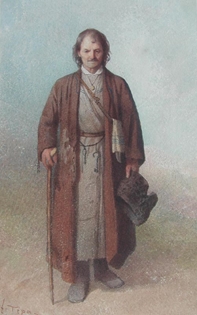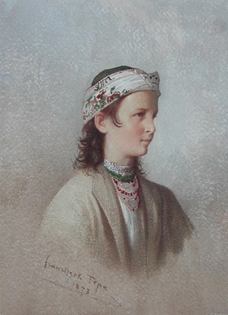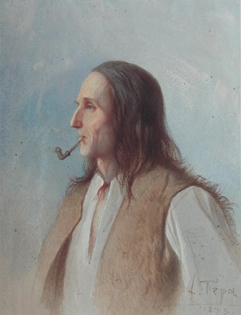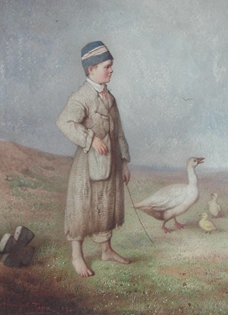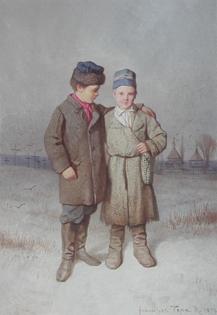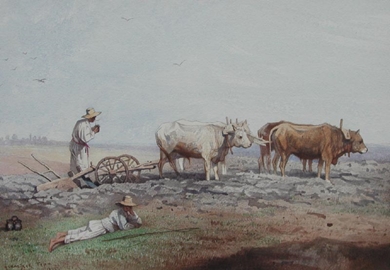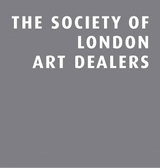Franciszek Tepa (1829 - 1889)
- AVAILABLE ARTWORKS FOR SALE
-
Franciszek Tepa (1829 - 1889)
Paysan Poet des Environs de Sodal
Watercolour
30 x 18.5 cm (11 ¾ x 7 ¼ inches)
Signed lower left, F. Tepa -
Franciszek Tepa (1829 - 1889)
Jeune Montagnarde des Environs de Truskaniva
Watercolour
26 x 20.5 cm (10 ¼ x 8 ⅛ inches)
Signed and dated lower left, Franciszek Tepa 1873 -
Franciszek Tepa (1829 - 1889)
Montagnard des Environs de Szczaronica
Watercolour
26.3 x 20 cm (10 ⅜ x 7 ⅞ inches)
Signed and dated lower right, F. Tepa 1873 -
Franciszek Tepa (1829 - 1889)
Petit Patre/Nodolie
Watercolour
29 x 20 cm (11 ¾ x 7 ⅞ inches)
Signed and dated lower left, Franciszek Tepa 1873 -
Franciszek Tepa (1829 - 1889)
Retour des Enfants de l'École des Enviros de Ztouzow
Watercolour
23.9 x 16.1 cm (9 ⅜ x 6 ⅜ inches)
Signed and dated lower right, Franciszek Tepa R. 1873 -
Franciszek Tepa (1829 - 1889)
Laboureur/Nodolie
Watercolour
20.5 x 30 cm (8 ⅛ x 11 ¾ inches)
Signed and dated lower left, Franciszek Tepa 1873
For more available works please contact us on stern@pissarro.com or +44 (0)20 7629 6662.
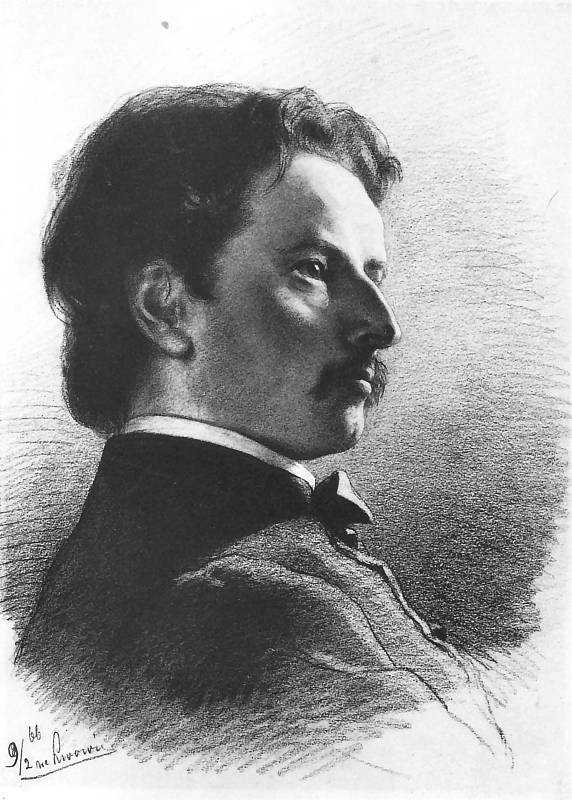 (credits: Artur Grottger)
(credits: Artur Grottger)
Polish artist Franciszek Tepa, was born at Lwów in present-day Ukraine, and studied at the Academy of Fine Arts in Vienna, Academy of Fine Arts in Munich and the École Nationale Supérieure des Beaux-Arts in Paris.
Politically active in the Europe-wide Revolutions of 1848, Tepa was jailed as political prisoner while in Vienna. Later he produced a series of portraits of Polish leaders of the November Uprising against the foreign Partitions of Poland including Joachim Lelewel, Józef Dwernicki and Józef Chlopicki among many others
A tour of Greece, Egypt and Palestine in 1852 provided Tepa with a wealth of ‘Oriental’ inspiration. In returning to Polish Lwów in 1860, Tepa refused a Professorship at the Kraków Academy of Fine Arts to produce vernacular portraits, folk scenes and landscapes for Count Wlodzimierz Dzieduszycki, becoming well known for his miniatures painted on ivory. Many of his works remained in Lwów (present-day Lviv) when the area passed to Ukrainian control after the Second World War.
Read more
Politically active in the Europe-wide Revolutions of 1848, Tepa was jailed as political prisoner while in Vienna. Later he produced a series of portraits of Polish leaders of the November Uprising against the foreign Partitions of Poland including Joachim Lelewel, Józef Dwernicki and Józef Chlopicki among many others
A tour of Greece, Egypt and Palestine in 1852 provided Tepa with a wealth of ‘Oriental’ inspiration. In returning to Polish Lwów in 1860, Tepa refused a Professorship at the Kraków Academy of Fine Arts to produce vernacular portraits, folk scenes and landscapes for Count Wlodzimierz Dzieduszycki, becoming well known for his miniatures painted on ivory. Many of his works remained in Lwów (present-day Lviv) when the area passed to Ukrainian control after the Second World War.

